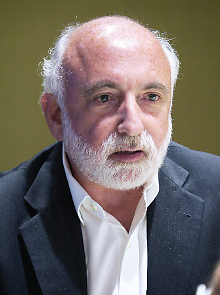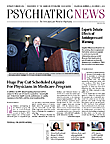Exasperated parents and Supreme Court justices may not be far apart in their views of the extended development of the adolescent brain.
If parents just want to know what were their kids thinking, the Supreme Court has tried, in a more formal sense, to understand how developmental immaturity influences a juvenile offender’s blameworthiness, said developmental psychologist Laurence Steinberg, Ph.D., a professor of psychology at Temple University, speaking at the American Academy of Psychiatry and the Law’s annual meeting in Chicago in October.
To that end, the justices have increasingly drawn on neuroscience research in crafting opinions on the punishment of juveniles.
A serious crime committed by an adolescent cannot be completely excused, but guilt and punishment may be viewed quite differently, compared with the same crime committed by an adult, said Steinberg.
In 2005, in the Roper v. Simmons ruling, Justice Anthony Kennedy reasoned that adolescents are more susceptible to peer pressure and have a “lack of maturity and an underdeveloped sense of responsibility,” resulting in “impetuous and ill-considered actions and decisions.”
“[A] third broad difference is that the character of a juvenile is not as well formed as that of an adult,” said Kennedy. “The personality traits of juveniles are more transitory, less fixed.”
Perhaps more significant than Kennedy’s conclusions were the justices’ sources: peer-reviewed literature and other expert references. The court has increasingly relied on amicus briefs filed by scientific and medical groups summarizing the latest research and tying it to the legal issues in cases.
In recent decades, neuroscientists have learned that important changes in brain anatomy and activity continue far longer and at different rates than once believed.
“Adolescents are more impulsive, less likely to consider the consequences of their actions, more likely to engage in sensation seeking, and more likely to attend to the potential rewards of risky decisions—including crime—compared to their costs,” said Steinberg. “Foresight is still developing at age 17, so some of adolescents’ immature behavior is not their fault.”
Furthermore, adolescents’ hypersensitivity to reward is more pronounced when they are with their friends. (They are not alone. Adolescent mice drink more alcohol with their peers than when they are alone, but adult mice drink the same amount regardless of whether they are alone or in groups.)
Yet anti-gang laws punish crimes committed in groups more harshly than those committed alone, the opposite of what the evidence would suggest, he said.
The neurobiological tug of war in mid-adolescence between sensation seeking and cognitive control finally begins to shift toward the latter over the next decade.
“Ninety percent of all juvenile offenders desist by their mid-20s,” said Steinberg.
So how should the justice system differentiate between a less-than-fully formed adolescent and an immature adult who commits a crime? The teenager’s unformed character means that adolescent offending is less likely to represent “enduring depravity,” he noted.
“Young people have a better chance at rehabilitation.” said Steinberg. “So it’s not the adolescent’s immature judgment per se, but its transient character compared to an adult that is significant.”
After early childhood, adolescence is a second period of brain plasticity, a result of the flow of pubertal hormones, he explained. The changes in structure of neural circuits result primarily from the growth of neuronal projections, such as axons and dendrites, which enable development of new synapses. The shift from adolescence to adulthood is marked by a neurochemical environment that encourages a move from synaptic change to synaptic stability.
“Adolescence is the last period of human development in which major plasticity is possible and thus represents an important period for intervention,” he said. “So it is important where we place adolescents after conviction. That is our last, best chance for intervention.”
But assessing an adolescent’s culpability and punishment by means of neuroscience alone is inappropriate, said Steinberg. “Neuroscientific evidence provides support for behavioral science when it is consistent with the latter,” he said. “So neuroscience can inform decisions about the controllability of behavior, but should still play only a supporting role to behavioral sciences.”
Future neuroscience research should link age-related changes in brain structure and function to legally relevant behaviors; encourage study of the nature, correlates, and causes of adolescent neuroplasticity; and explore how to improve prediction of an individual’s future behavior, especially in regard to recidivism or responses to interventions, he said.
That knowledge will not eliminate clinical observation and judgment. “Forensic psychologists and psychiatrists will not be displaced by neuroscientists anytime soon,” he stated. ■
The Supreme Court’s decision in
Roper v. Simmons can be accessed
here.

